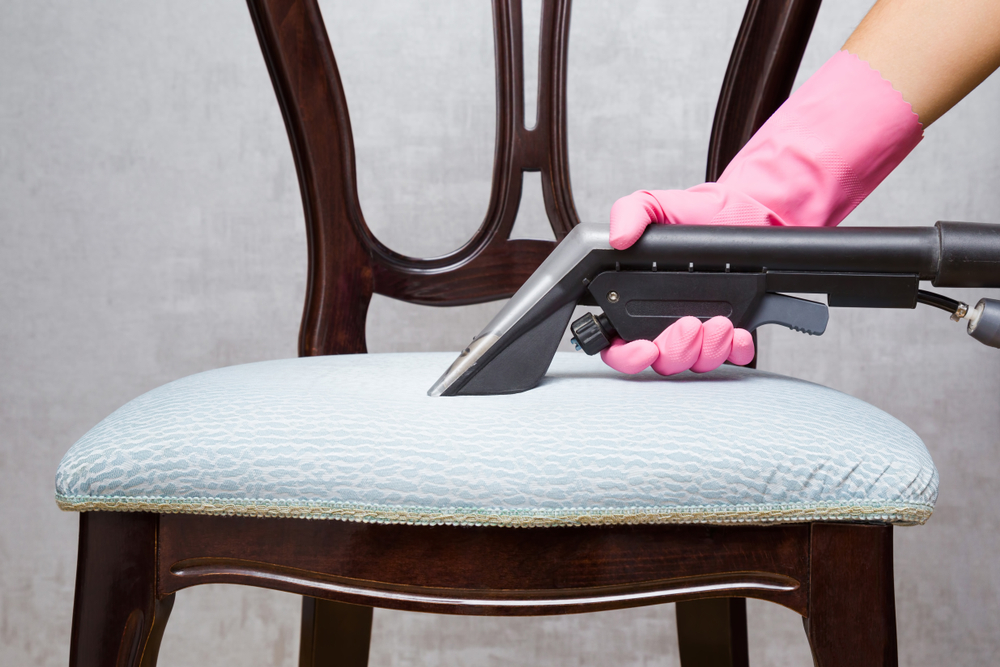Upholstery Unveiled: The Science of Cleaning Different Fabrics

Upholstered furniture adds comfort and style to our living spaces, but they also require careful cleaning to maintain their beauty and longevity. The world of upholstery is diverse, with various fabrics ranging from delicate silk to rugged leather.
In this article, we will delve into the science behind cleaning different upholstery fabrics, providing valuable insights into material-specific steam cleaning techniques that can help you keep your furniture looking fresh and inviting.
Understanding the Diversity of Upholstery Fabrics
Upholstery fabrics can be broadly categorized into natural fibers (such as cotton, silk, and wool) and synthetic fibers (like polyester, nylon, and microfiber). Each type of fabric has its unique characteristics, requiring tailored cleaning approaches.
The Science Behind Steam Cleaning
Steam cleaning has emerged as an effective and eco-friendly method for cleaning upholstery. It involves using steam, often combined with mild detergents, to loosen and lift dirt and stains. The science behind steam cleaning lies in the combined action of heat and moisture, which work together to break down grime and sanitize fabrics without the need for harsh chemicals.
Material-Specific Steam Cleaning Techniques
- Natural Fiber Fabrics: Delicate fabrics like silk or wool require gentle cleaning. Use a low-pressure steam setting and avoid excessive moisture. Test a hidden area before proceeding.
- Synthetic Fiber Fabrics: Polyester and microfiber are more durable. Utilize medium-pressure steam with a fabric-friendly detergent to effectively lift dirt and stains.
- Leather Upholstery: Steam cleaning leather requires a delicate approach. Use a specialized leather cleaner and conditioner, applying steam sparingly to avoid moisture damage.
- Cotton Upholstery: Cotton is versatile but can absorb moisture easily. Employ low-pressure steam and ensure thorough drying to prevent mold growth.
- Velvet and Chenille: These textured fabrics can trap dirt. Use steam on a low setting and a soft brush attachment to gently clean the fibers.
Benefits of Steam Cleaning Upholstery
- Effective Stain Removal: Steam’s combination of heat and moisture helps break down and lift stubborn stains from fabric fibers.
- Sanitization: High-temperature steam kills bacteria, dust mites, and allergens, promoting a healthier living environment.
- Gentle on Fabrics: Steam cleaning is generally gentle on upholstery fabrics, minimizing the risk of damage.
- Environmentally Friendly: Steam cleaning reduces the need for harsh chemicals, making it an eco-conscious choice.
Precautions and Tips for Successful Steam Cleaning
- Read manufacturer guidelines: Upholstery often comes with care labels that provide specific cleaning instructions.
- Test a hidden area: Before steam cleaning the entire piece, test the method on an inconspicuous spot.
- Proper ventilation: Ensure proper airflow to aid in the drying process and prevent mold growth.
- Avoid over-saturation: Excessive moisture can lead to damage and mold. Use steam sparingly.
In Closing
As we unravel the science of cleaning various upholstery fabrics, it becomes clear that a one-size-fits-all approach doesn’t apply. Understanding the intricacies of different fabrics and applying material-specific steam cleaning techniques can help you maintain the beauty and longevity of your upholstered furniture.
By harnessing the power of steam cleaning and adapting it to the unique properties of each fabric, you can ensure that your furniture remains inviting, clean, and vibrant for years to come.





